In this guide we’ll cover:
- Dog’s diet pre-adoption
- What to feed new arrivals
- Dog food recommendations
- Healthy weight and body composition
Dog’s diet pre-adoption
We are often asked what the dogs are fed in the shelters we work with in Spain, as many adopters have good intentions on matching the dogs food for their arrival.
Whilst with their hunter, the dogs typically won’t have been fed food of good quality, or consistently, and some will have been underfed.
Once they arrive in shelter they tend to get fed on dry food with the occasional wet food mixed in. The type and brand will vary depending on availability. But these aren’t brands that are available in the UK typically. This is why we don’t advise adopters to match the food the dogs are fed in the shelter.
When adopting a dog who is in UK foster, the foster home can share information on your dog’s current food and any particular likes or dislikes they have.
What to feed new arrivals
When your dog first arrives, we recommend feeding them on a bland diet before transitioning them on to whatever dog food you intend to feed them long term.
The stress from the journey over to the UK, or even from moving between foster home to their forever home, can give many dogs a bit of an upset stomach for the first few days. So to help settle their stomachs we recommend feeding them bland food initially to help them get back on track. This means foods such as:
- Plain cooked turkey, chicken or white fish
- Scrambled eggs
- Boiled potatoes or sweet potatoes
Whilst some recommend boiled rice on a bland diet, rice can upset some dogs’ stomachs so try to avoid this.
Once your dog seems to have a more settled stomach, start to mix in their new dog food with their bland diet and transition them over.
Another important thing to consider with new arrivals especially is how they’re fed. So here are some top tips:
- Bowls – part of a new dog experience for many is getting them a lovely new bowl of their very own. However a more anxious dog may find that new food bowl quite strange and intimidating – it may be metal and makes a strange noise when their dog tag hits off it, or maybe they can see a reflection in it and that unnerves them. Not all dogs will feel like this, but if you have a new dog who is spooked around their food bowl… don’t use that bowl. Some dogs may benefit from having some food scattered on the floor for them initially until they can gain their confidence around being fed in a new home. Once they feel more settled and secure, then they are more likely to be less intimidated by any fancy new food bowl.
- Slow feeders – if you have a dog who inhales their food – use a slow feeder, or a lickimat at meal times. Not only will this make them take longer than 5 seconds to eat their meal, it also makes it into a great source of enrichment for them.
- Nervous dogs – not all dogs are ravenous when they arrive in a new home, and some are very anxious at meal times. An important thing to consider is that some dogs may need their own space to eat their meal, as a nearby human may make them feel too anxious to eat. If this is the case, put their food down and give them plenty of space to enable them to have the choice to eat.
- Resident dogs – if you have more than one dog in your home, feed them in separate areas. This will help to eliminate any tensions between the dogs over food, and it will enable you to keep an eye on how much each dog has eaten
- Keep counters, tables, etc clear from food – some dogs have known real hunger in their lives and may be prone to counter surfing if they notice something tasty up there. The easiest way to prevent this is to keep counters clear and remove temptation.
- Bins – some dogs may be very interested in any food you’ve thrown into bins and may decide to treat it as their very own buffet. If this is the case, move your bin to an inaccessible location in the short term, once your dog has settled in and is less anxious around food these opportunistic bin raids should stop.
Dog food recommendations
Not all dogs foods are created equal. Unfortunately some of the market leading brands of dog food on many supermarket shelves are far from being the best quality of food for your dog that their adverts suggest.
We recommend feeding a healthy diet, whether dry, wet, raw, cooked or other. What food that is can depend on many factors, including personal and your dogs preferences, their age, any allergies and budgets.
To help you make an informed decision on what dog food is good quality for your dog, it is well worth looking at All About Dog Food
This website compares many brands of dog food (some are not UK based) and rates them in terms of quality and price. It is a good way of seeing how some popular brands of dog food actually measure up (or don’t) in practice.
Over recent years, raw-feeding has increased in popularity among dog owners. It may not be for everyone, but if you’re interested in raw-feeding, we have a separate blog dedicated to it.
See Raw Feeding.
Healthy weight and body composition
Sadly, due to their previous lives, many dogs arrive in shelters having known real hunger and some are certainly on the skinny side. It takes stressed dogs even longer to start to gain weight so your new arrival may be underweight still when they arrive. In time once they settle into their new home life and have a regular healthy diet, they will start to gain weight.
While we all love to spoil our dogs, and especially after you may have spent weeks trying to get them up to a healthy weight, it is important to ensure that we don’t overfeed our dogs and help them to stay a healthy weight long term.
Canine obesity is sadly one of the fastest growing health concerns for dogs, it’s important that we are able to provide them with a balanced diet and the right amount of exercise to stay fit and healthy.
The ‘ideal weight’ varies greatly between dog breeds and genders. Your vet will be able to give a good guide to what weight your dog should be, however one of the best points of reference is looking at their body composition.
The following diagram is a great guide:
(Source – ukpetfood.org)



